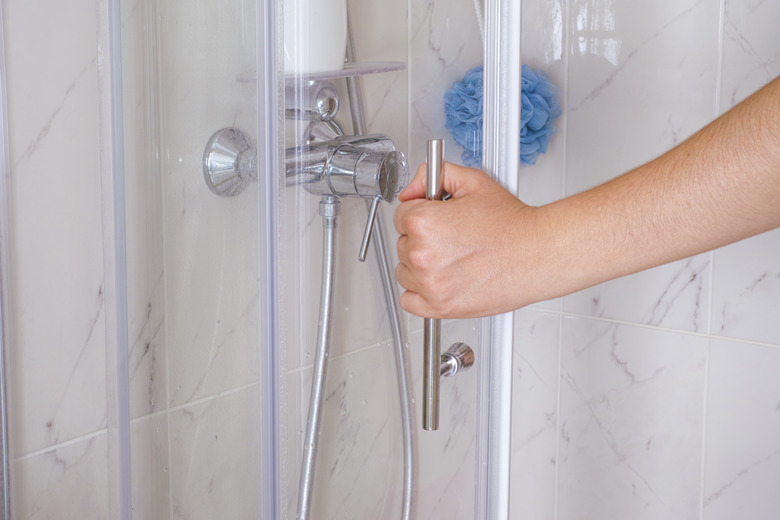How Does A Single Handle Shower Faucet Work?
We may receive a commission on purchases made from links.
By consolidating the balance of hot and cold water into a central control, single-handled shower faucets provide an easier way to achieve the desired temperature. While these shower faucets are available in an endless array of styles and finishes, each uses one of two underlying mechanisms: the pull-out valve or the turn-around valve.
Single-handled shower faucets are now more popular than two-handled faucets, likely because they can help prevent burns since, even at high heat, some cold water is mixed in, and also because people with limited mobility can adjust water temperature with one hand.
Tip
To operate a single-handled shower faucet, you either pull out the faucet handle to start the water flow, then turn the handle to adjust the temperature, or you turn the faucet to start the water flow.
The Pull-Out Valve
The Pull-Out Valve
In this faucet, the handle is attached by a thin metal rod to a plastic tube. Toward the far edge of the tube, two narrow rectangular holes are cut opposite each other into the plastic. This plastic tube fits snugly inside a rubber-lined pipe, which also has two long, narrow openings that are cut at the center. Each of these rubber-lined pipe openings lead directly to the cold water and hot water lines, respectively.
When the handle is pushed in, the tube's holes don't line up with the pipe's hole, sealing off all the water. However, by pulling the handle out, the two pairs of holes partially overlap, allowing water to rush into the tube (which leads to the shower spout above).
By turning the handle to the left or right, you increase the hole overlap for one side while decreasing the overlap for the other. This increases the amount of one water temperature flowing into the tube, which pushes the average temperature of the "mixed" water either warmer or cooler.
The Turn-Around Valve
The Turn-Around Valve
The turn-around valve also uses the "tube-within-a-rubber-lined-pipe" system, except that the inner tube features a single, long rectangular opening and the hot/cold openings in the pipe are on the same side (spaced about 1 mm apart).
When the faucet is off, the tube's opening is completely sealed off from either the hot or cold water inlets. By turning the handle, you first align the tube opening solely with the cold water inlet, causing chilly water to flow from the shower.
As you continue to turn the handle, the tube opening starts to overlap with the hot water inlet as well as the cold. The water mixes in the tube for a tepid shower. Further turning will have the tube overlapping solely with the hot water inlet, putting you at the mercy of the water heater's thermostat.
Fixing a Single-Handled Shower Faucet
Fixing a Single-Handled Shower Faucet
If your shower is dripping, you may need to adjust the handle, rather than replacing the entire faucet. On a single-handled faucet, this likely means replacing the shower valve cartridge. This is basically the same process you would use to fix a leaky single-handled sink faucet.
Remove the handle; then pry out the clip that holds in the cartridge, using a small screwdriver. There will be a handle washer; remove that and then twist out the cartridge using pliers. Sometimes this part doesn't go as easily as you hope, and the cartridge won't budge. If that happens, you will need a special tool called a "cartridge puller." Be sure to find one that will work with your faucet brand.
Use the old cartridge to identify the exact replacement part. Your manufacturer should be able to help you get both the cartridge puller and the new cartridge.
